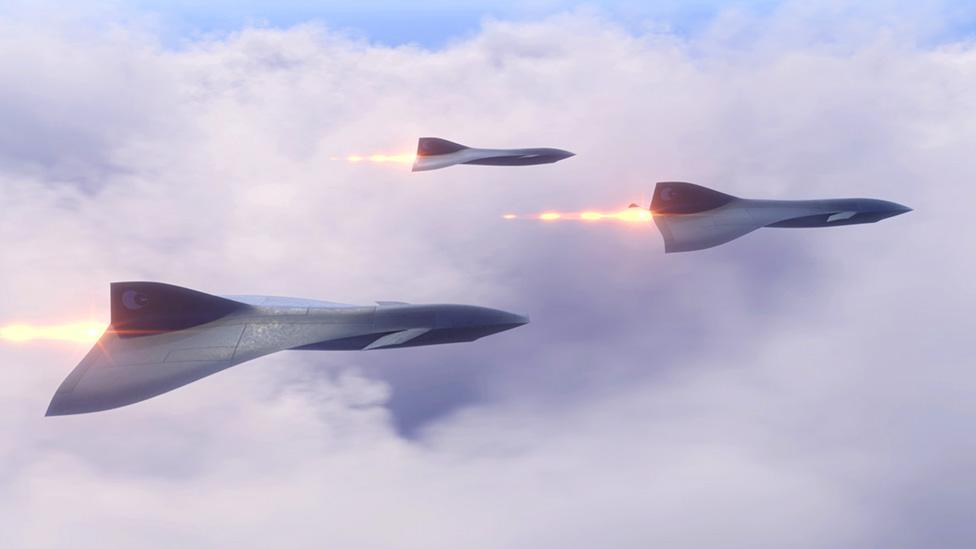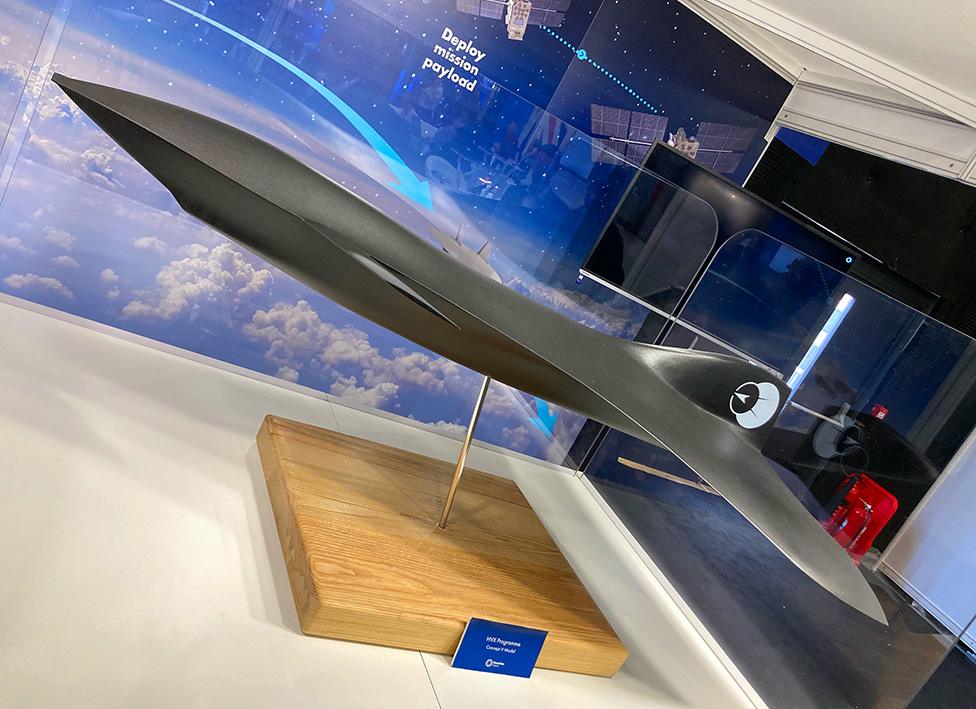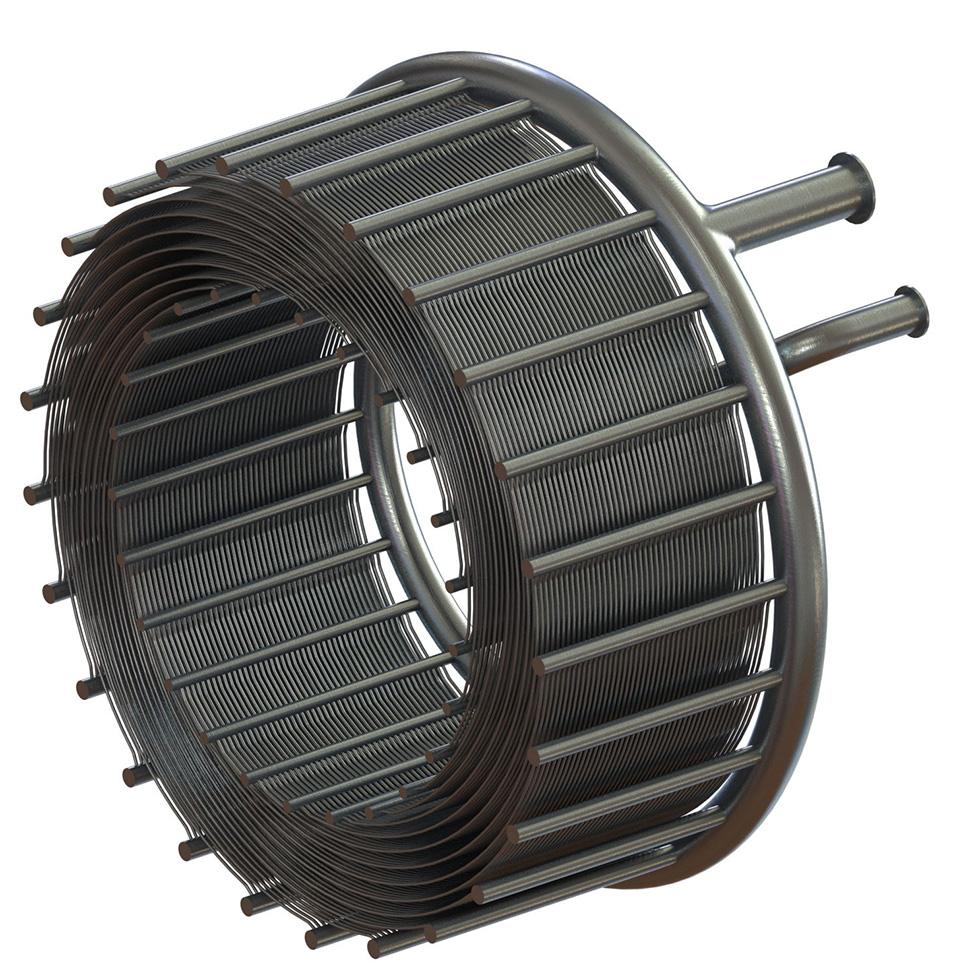UK studies reusable hypersonic military jet technology
- Published
- comments

Artwork: The single-engine vehicles would be reusable. They would return after a mission
Aeroengineers are to investigate the potential of hypersonic technologies for use by British armed forces.
Russia, China and the US are all developing missiles that can travel through the atmosphere at many times the speed of sound, making them very difficult to track and shoot down.
The UK project, announced at the Farnborough Air Show, would look to develop a super-fast, uncrewed air vehicle that could deliver payloads at great distance and then return to be used again.
The team behind the venture includes Rolls-Royce, the RAF, the defence research agency DSTL and the Oxfordshire company Reaction Engines.
It's also got the backing of the UK's National Security Strategic Investment Fund.
The consortium has already begun its work and will aim to fly a demonstrator "well within this decade".
A model of this, which might approach the size of a Hawk trainer jet and is codenamed "Concept V", was unveiled at the show.
Air Vice-Marshal Linc Taylor, the RAF's Chief of Staff Air Capability, won't discuss the applications for such a system, but says the UK has some novel technologies that could allow it do things differently to those seen elsewhere in the world, and at much lower cost.
"One of the things we believe will have value in our future way of war-fighting, changing the way we fight, is in reusable hypersonics," he told reporters.
"At the moment we're exploring the technologies. If they do come to fruition, we will then go, 'Okay, this does have utility, we have the evidence behind it', and then we'll develop it."

Reaction Engines unveiled a scale version of the Concept V at Farnborough
The Hypersonic Air Vehicle Experimental (HVX) Programme will be using innovations in air-breathing propulsion developed over many years by Reaction Engines for a reusable spaceplane.
Essentially, this will see pre-cooler heat-exchangers put on the front of a jet engine to allow it to achieve velocities in excess of Mach 5 (five times the speed of sound; approaching 4,000mph).
At these hypersonic speeds, the temperature generated inside a gas turbine would begin to melt components unless they were cooled in some way or made from exotic materials.
"Thermal management is absolutely key to this project. Because, as you all know, the faster you go, the hotter it gets, and we're talking about a vehicle that potentially could travel a mile a second in terms of speed and where temperatures would be in excess of 1,000 degrees centigrade," explained Mark Thomas from Reactions Engines.
"That's what our cooling technology allows. It takes that heat threat away and drops the temperature from 1,000 degrees, or above, to ambient in less than a blink of an eye."
Along with Rolls-Royce, Reaction Engines had started investigating this approach in 2018, using an EJ200, the gas turbine that powers the RAF's Eurofighter-Typhoon fighter. They'll take the lessons learned from that exercise but apply them to a smaller, undisclosed jet engine.

A pre-cooler will rapidly chill the air flow entering an engine
The model unveiled at the show is indicative only. How it would actually look is uncertain at the moment.
The HVX programme will prove the engine architecture first and then wrap an appropriate air frame around it.
"There are many challenges in producing this vehicle. One is enabling the engine to perform efficiently at those high speeds, not just survive them," said Ed Gower, who leads the HVX programme at Reaction Engines.
"The key USP to what we're doing here is that it's not a missile; it's something that is able to return sub-sonically. Because of that it will need to operate at high speed and low speed, which is obviously what distinguishes it from something like a ramjet on a missile," he told BBC News.
Air Vice-Marshal Linc Taylor said the concept must be delivered for a cost that's much less than would normally be expected for an experimental plane - much less than £400m.
"One of the things we're looking at is how can we do this for a fraction of the cost that our adversaries might spend in this area," he explained.
